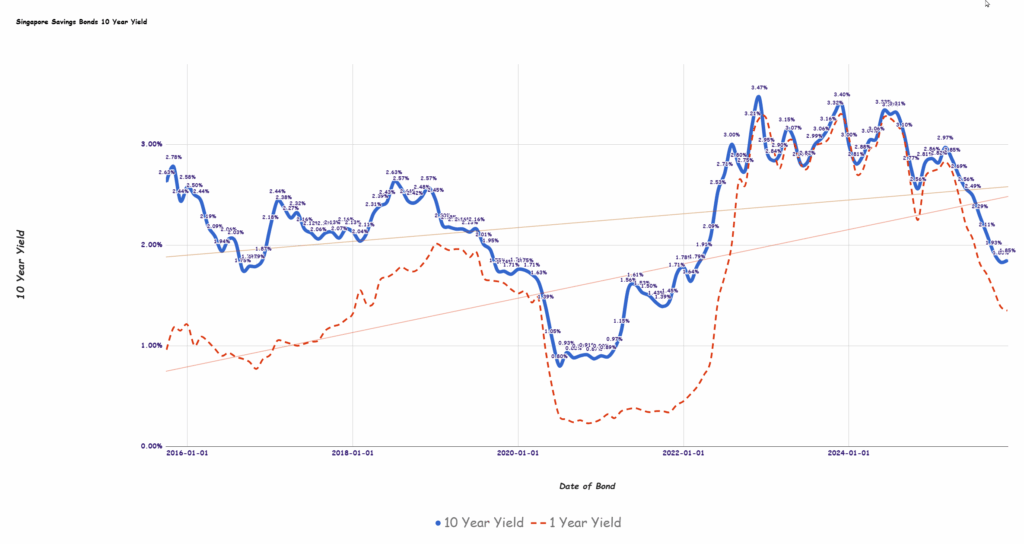Why Sellers Are Slashing Prices Like Never Before — And What It Means for Your Next Big Investment Move
Is the housing market standing on the edge of a crash, or are we just staring down the barrel of a healthy correction? It’s not every day you see 42% of homes on the market sporting price reductions—the highest notch on this dial in 12 years. Sounds alarming, right? But hold on. I teamed up with Mike Simonsen, the sharp-minded Chief Economist at Compass, to break down what these seismic shifts in inventory truly mean for savvy investors and homebuyers alike. Spoiler alert: rising inventory and falling prices don’t automatically scream “crash.” In fact, these shifting sands may be handing buyers unprecedented negotiating power they haven’t enjoyed in years. Curious to know where the real opportunities and risks lie in this evolving landscape? Let’s untangle the data, decode the market dynamics, and learn how to play it smart in these unusual times. LEARN MORE
Are we witnessing the beginning of a housing market crash, or is this just a healthy correction? With 42% of homes on the market having taken price reductions — the highest level in 12 years — host Dave Meyer sits down with Mike Simonsen, Chief Economist at Compass, to decode what these dramatic inventory changes really mean for investors and homebuyers. This episode reveals why rising inventory and falling prices don’t automatically signal a market crash, and how current market dynamics are creating unprecedented buyer negotiating power for the first time in years.
Click here to listen on Apple Podcasts.
Listen to the Podcast Here
Read the Transcript Here
Dave:
42% of homes on the market right now have taken a price reduction from their original list price. That’s the highest number we’ve seen in 12 years. We’re clearly in a different housing market than we’ve seen recently, and one that’s rapidly changing. Inventory is up and prices are still flat. At least for now. These are the dynamics you need to understand if you’re thinking of investing in the next few months. Hey everyone, it’s Dave back with another episode of On the Market. Today we’re joined by Mike Simonson, chief economist at Compass. Mike is going to help us understand what is happening with the current housing inventory nationally and regionally. We’re going to understand supply trends that are key to understanding when to invest and how much negotiating power you have as a buyer or as a seller. And Mike has been translating this raw data into real actionable takeaways for many years that are going to help you decide what to do with your portfolio. So let’s bring ’em on. Mike Simonson, welcome back to On the Market. Thanks for being here today,
Mike:
Dave. It’s always fun to be here with you.
Dave:
Is it safe to say, Mike, you’re sort of like the inventory guy
Mike:
In
Dave:
The industry? That’s how I think of you is that you have always sort of been, even before it was common to be talking about inventory each and every week, you’ve always been tracking this stuff.
Mike:
Yeah, well, for almost 20 years we’ve been tracking every home for sale in the country once a week. And it’s not just the inventory, but that active market. There is so much signal in the active market, the active inventory and the pricing of that and the changes in pricing. There’s so much signal in that traditional housing data was about what homes sold last month or two months ago, and there’s value in obviously knowing what sells and for how much it sells for, but there was so much signal in how many are getting listed this week and what are the prices of the new listings and which ones are going into contract they haven’t even sold yet. All of that active market stuff has so much signal and nobody knew it really before we started tracking it and because it was domains of an MLS and there was 700 of them around the country and all of those things. So we were really the ones who really pioneered looking at the active market and all that could tell us about what’s happening in housing.
Dave:
So just for everyone listening, this is exactly why we pay so much attention to inventory because it tells us a lot about what might happen in the future. It’s a great lead indicator and it can also tell you what to do today about your own investing strategy, how to bid on different properties, what price bands you might want to be looking at, what asset classes you want to be looking at. So we are lucky to have Mike here today filling us in with the most accurate UpToDate data that he has. So Mike, give us the big picture. What’s going on?
Mike:
Okay, the big picture is inventory has been climbing all year. It’s been climbing for three. Really, there are 26.6% more homes on the market now than a year ago. That’s significantly more.
There are 867,000 single family homes unsold on the market this week. That is finally back to the old normal range, like pre pandemic range of homes for sale for the past three years. The headlines have been home, sales are down fewer transactions, but prices hit a new record high. So sales were down and prices were up, and we finally got to a place where inventory is, the supply is sufficient that that headline is flipping. Now sales are probably starting to tick up. We’re probably past the very bottom of home sales, the total volume, but we’re in a moment where the headlines are probably going to start saying prices ticking down.
Dave:
Yeah, that’s something we’ve been talking a lot about on the show. We’ve already of course are seeing some metros where prices are ticking down, but on a national level, all the data we see pretty much across providers shows that prices are still up, but the rate year over year rate of change is going down. And so it seems like the trend is approaching zero maybe by the end of the year within a few months, who knows? But what is going into this, Mike? What are the changes after so many years of high interest rates? Why now are things starting to change?
Mike:
Well, so when you think about the supply demand equation, even in 22, rates started rising, 23 rates spiked up over 8% for a while. Even while that was happening, demand was weak, but there were so few homes available to buy that even in a weak demand environment, there was enough competition in most of the country. Now that inventory is up in most of the country. In fact, it’s up everywhere, even in some of the northeast places where it’s been slower to grow. So 26% nationally, more homes on the market. So the short answer is that long enough time with the higher rates inventory builds, and so now supply is sufficient nationally that in weak demand, buyers know they can negotiate.
Dave:
Alright, everyone, we do need to take a quick break, but we’ll have more with Mike Simonson right after this. Welcome back to On the Market. I’m here with chief economist at Compass, Mike Simonson discussing the most recent inventory data. What is going on in the demand side of the equation? I know I billed you as the inventory supply side guy, but I’m sure you have some thoughts and data about what’s happening to demand side
Mike:
For sure, and you can see a lot of the demand in the active market. We can see for example, the percentage of homes with price reductions is a function of demand. So right now, 42% of the homes on the market have had a price cut from the original list price. Wow. There’s always some price reductions, but normally it’s about 30 or 35% and now we’re at 42.
Dave:
That’s good context because yeah, when you hear 42, it sounds kind of alarming, but it’s helpful to know that it’s just normally a third of them are priced incorrectly and need to have a price job
Mike:
And sometimes it’s an accidental price. Sometimes it’s intentional. I’m going to go fishing and see if I get offers, but about a third are overpriced and they take a price cut before they sell in hot markets. In the beginning of 22 before the rates turned, it was only like 15% of the country had taken a price cut.
Dave:
Okay,
Mike:
So a third think they’re overpriced, but some of those guys who were fishing got their offers
Dave:
A lot. It felt like a lot we’re getting their
Mike:
A lot. Yeah, yeah. And so only 15% had to do a price cut, so now it’s 42%, and so that is directly related to demand. We can also see the slope of that curve, so how fast sellers are cutting prices. So if it goes from 41.7 to 42.7 in a week,
Speaker 3:
That’s
Mike:
A lot of homes suddenly cutting prices. What we’re seeing right now is elevated so weak demand but not accelerating. So not deteriorating rapidly or something. It deteriorated rapidly In 22, we could watch that curve of those price productions go from 15 16% up to 42% that year. It was a big move and if you were selling at that time, you should have looked at that number to know that demand is changing and therefore if I want to sell the house, I’m not going fishing for an offer. And so right now we can see just by looking at this number, demand’s not really increased, but it’s not deteriorating from here. So if the house is properly priced, it can sell and it’s not getting worse next week.
Dave:
Yeah, okay, good. Thank you for letting us know that. I think it is a common misconception right now. People see prices starting to flatten now drop in certain markets and think there are no buyers, but that is not the situation. You have to consider both sides of this, both the demand side and the supply side. And that is really important in figuring out what happens from here. Because if there was no buyers and there was tons of inventory coming on market, that would be potentially a more significant price correction or even a crash than what we are probably likely to see right now.
Mike:
Right? So right now we’re looking at maybe prices go negative this year by a fraction. There are some markets where prices are down more significantly like some of the Florida markets and things down from the peak, but for the most part, most of the country is around flat with home prices year over year. So what would be a bearish scenario? We know demand is weak, it’s not getting weaker, but it’s not great if we saw weak demand with increasing supply like sellers each week. Maybe they’re panicking. Maybe it’s investors saying, this doesn’t pencil out anymore, I got to get rid of it. Maybe it’s the big institutional investors, maybe it’s baby boomers finally retiring and selling. Been
Dave:
Hearing about that for a while.
Mike:
For a while,
Dave:
Right?
Mike:
Well, and so that’s the thing. This could come from somewhere a supply. And so then we would measure that in the new listings each week. So how many sellers are hitting the market each week? And so we can track the number of new listings each week and see is that number accelerating? So is the supply side not only high but accelerating because as you said, that’d be a more significantly bearish signal. So I watch the new listings volume each week and the new listings volume right now is actually kind of decelerating,
Dave:
Right? Yes.
Mike:
So in the data we did this week, we could see that year over year there are no more sellers than there were last year at this time each week, no more new listings, and it looks like it’s going to shift negative to me. So fewer sellers each week in the second half of the year, and that is potential sellers look and they say, well, I don’t have to sell this house. I’ve got a cheap mortgage and I got good cashflow and it’s fine. I don’t have to sell it. I can wait until there are better buyer conditions.
Dave:
Yes, exactly.
Mike:
And so that’s what they’re doing
Dave:
To me though. Isn’t that a sign of a healthy market? Isn’t that a normal rational reaction to what’s going on?
Mike:
I think so. It is absolutely rational by the sellers. I’m not going to get the best price right now for my property. I’ll wait to sell it later. Totally rational. It is also rational for buyers to go find the seller who needs to get out and get a bargain.
Dave:
Yeah, absolutely.
Mike:
That’s the first time you’ve had that in a long time
Dave:
For sure. We’ve seen this for many years now. I think starting around COVID, we had a lot of people making a lot of noise about the housing market and a crash because it has rightfully been a very confusing, unusual time in the housing market. But a lot of folks have been pointing to inventory going up, new listings going up over the last two or three years and say, look, the market is definitely going to crash. But there’s this inherited assumption in their analysis that once new listings start going up, they just go up indefinitely, which is obviously not what happens. That is not a rational thing to happen, and as Mike just said, that is not what is being reflected in the data right now.
Mike:
The way I think about it too is a lot of the folks with the hypothesis that the market is going to crash, start with that assumption, the market’s going to crash and then they try back into the data, right? And I mean look, it’s fair to have that assumption or that hypothesis that the market’s going to crash. So I look for those signals and demand is weak, no question about it. We have not had any relief on rates until maybe like today. We finally just got a little bad jobs report, so mortgage rates dipped a little bit, but we really haven’t had any relief on rates and therefore demand remains weak. That’s no surprise. So then the question is, is it being met with signals of a flood of supply coming into the market? Is that happening? I look at that every week because it’s a real hypothesis, but I don’t see it.
Dave:
I try and dig it to regional trends as I’m sure you do too. And I was looking at two different data sets next to each other. One was where prices are going down the most just regionally, and the other was where new listings were going down the most and they were the same markets for the most part. You see that places, I don’t know, Cape Coral, Florida, we’re picking on Cape Coral. Feel bad for the situation there. It’s not going well. Cape Coral double digit declines. So is that mean that more people are going to sell? No, it means fewer people are going to sell. That is this fundamental misunderstanding that not everyone in Cape Coral is panicking right now and they’re like, oh my god, prices are going to go down. Let’s list our market when there’s not sufficient demand already
People are saying, you know what? I don’t need to sell. I probably have a two or 3% interest rate. And according the Fed just came out with delinquency and foreclosure data. We see the private data all the time, foreclosure and delinquency data is doing fine. And so people are paying their mortgage, which means they don’t have to sell. And if they’re seeing a market where they don’t have any leverage and they’re not going to get the price they want, they’re just going to choose not to sell. And that’s not just Cape Coral. It’s happening in markets like Austin or San Antonio or any of these markets that are seeing relative weakness or price declines for the large part. New listings are starting to come down there, which will eventually create a bottom for those markets and prices will even out.
Mike:
And I would say that there are essentially no markets where there are a lot of new listings.
Dave:
Right? Interesting. Is that historical standard
Mike:
To a historical standard. So if you think nationally, it would be totally common at the end of July, early August to have 80 or 90,000 single family homes listed in a given week and we had 70,000 this week. It is fewer than normal. It is fewer than any year except for 2023 and it’s not growing off of last year. All of those things are, I think exactly your observation. The thing that in a lot of people’s minds is 2000 6, 7, 8 prices were falling and then we flooded the market with listings, and that was because the mortgages that we had at the time were really lousy. They were high rates and the rates were resetting higher. They were low equity. So that means if I lose a little bit of money on the house, I’m upside down. There’s all kinds of reasons to walk away from that and let it go into foreclosure and none of those conditions are true. Now, even when, this is an interesting point that I think about. We’ve had very low unemployment for a long time, but there are some signals that unemployment’s ticking up and the economy’s slowing, unemployment’s sticking up. So even now, if I lose my job in previous recessions, I say, wow, I’m out of a job now. I’m unemployed for 90 days. I’m not going to be able to make my mortgage payment.
And in previous recessions I go, I got to sell the house to save money. Now I can’t sell the house and go rent for cheaper.
Dave:
That’s a good point. Yeah,
Mike:
Rent’s higher than what I’m paying on my mortgage. So I’ve already got the best deal, so even if I lose my job, I’m going to fight like hell to hold onto my house because it’s the best thing I have.
Dave:
What?
Mike:
And I can’t go save money now in a recession, you lose your job. There will be folks who will sell some houses as job losses mount. Some of your audience will like, well, I’m going to unload two of my 10 houses, whatever. There will be those kinds of things that happen.
Dave:
Well, that’s a different calculation for an investor. It’s just a different math problem than if you’re trying to figure out where you’re going to live,
Mike:
Right? And so in this cycle that we’re in, because everybody has such a strong mortgage, even in a job loss recession, inventory is still going to be pretty restricted. The new listings volume is still going to be pretty restricted, but I still watch it every week to know is it ticking higher? Is it getting close to normal? And in fact right now it’s ticking down.
Dave:
I’ve talked a lot on this show about how the differences between 2008 and now, and sometimes people in my position, I’m sure you get this too, we’re accused of being overly optimistic about the housing market and trying to pump things up. I’m a real estate investor. If I thought things were going to crash, I’d probably change my behavior if I genuinely believe that. But I’ve tried to show people and explain that just because prices are going down does not mean that there’s a crash. You need to have prices come down and you need that element of forced selling. As long as sellers have the option to not sell, it really does put a floor on how far prices will drop. Because just think about it, if you’re listening to this and you own your primary residence, wouldn’t you fight like hell, like Mike said, to avoid selling at a bad price or to sell your home only to go rent something that’s more expensive for you. This just isn’t the same thing as a market crash. It’s not the same thing as some other asset prices or commodities. Housing just works a little bit differently. And that’s why for me, keeping track of the stuff you’re talking about, foreclosures, delinquency rates right now is super key to try and understand how significant of a correction we might be in for the next couple of years.
And I don’t know if you saw it, I think it just came out today, I was kind of going through it this morning, but the Fed puts out these credit reports every quarter and I was just looking at it and the credit quality in the US mortgage market is really good. People are paying their mortgages. The average origination score this year is like seven 60 on a credit score. The people who are borrowing this money are in very good positions to repay it. Of course, black swan events happen. Some of these real bear cases for the labor market where people say AI is going to shoot unemployment up to 10%. That could be a bad situation, but we’re still quite a ways away from that in my opinion.
Mike:
And to be fair, people of course accuse me of being too optimistic on the housing market. But the way I look at it is those bearish scenarios, the bus scenarios could happen and my job is to watch if they are. And so sometimes people get mad as I say, they aren’t happening and they say they interpret that me as saying, therefore it can never happen.
Dave:
Yeah, that’s a different thing
Mike:
I’m tracking. And right now here’s what we can see. We can see that inventory is sufficient. Now that there are price pressures in a lot of the country, we probably by the end of the year, we’ll see negative home price headlines. We can see though that the supply side of that equation is not accelerating, and that acceleration would be a really big bearish signal, and that signal is not in the data right now. The scenario that could indeed happen is, so in the last few days we had sort of bearish jobs numbers and that helped interest rates, but there’s plenty of signal in the data and the underlying data. We could get bad inflation reports that could drive rates the other direction. And so if mortgage rates were to jump over 7%, again, I think you would see a very abrupt stop in demand, and I think you would see it in that price reductions number the next day. You’d see that start going up because buyers said, I’m not buying now. An offer doesn’t get made. So that seller thought he had a deal, suddenly he’s overpriced and he cuts his price the next day,
No offers came in. And so we can watch that adjustment happen very quickly. Prices adjusted down in June and again in October of 22 when people were shocked by the abruptness of the change rates. And if we had a big jump in rates and it just might take a bad inflation, like one bad inflation report, what if tariffs suddenly do cause a big inflationary push, definitely causing it in some parts of the economy, but overall inflation’s only a little bit higher than they want. So what if it jumps and suddenly the probability of a fed rate cut falls and the long end of the curve goes up, if rates jump over 7% and they could, then we would see an abrupt stop in buyer demand and we would see immediate price corrections because we’re already sort of at the precipice.
Dave:
Great stuff here from Mike, but we do have to take a quick break. Stick with us. Welcome back to On the Market. I’m here with Mike Simonson. Things do feel a little fragile right now, especially on the demand side. We have seen that sustained demand. Like you said, if the job market come back weak and inflation stays low rates will probably go down a little bit. I’m not personally someone who thinks they’re going below 6% anytime soon, but I think they could come down a little bit. But I think the whole industry is missing the risk of rates going up. And I think that that’s a really important thing to keep an eye on. So the inflation prints in the next couple months will be super important, but as we were saying right now, people are paying their mortgages, things are going well, but I just have a lot of long-term interest rate fear. We’ve gotten sort of used to these lower rates and I think there’s a good chance they go down a little bit in the next couple months. But five years from now, I worry about just with our debt and everything going on, the need to print money to service that debt and that long-term interest rates might go up, which is a whole other question when we’re talking about correction and crashes, I’m mostly looking at six, 12 months ahead of us. I’m not trying to forecast what’s happening with prices five years from now.
Mike:
And there are a bunch of structural things we’re doing with the economy now from fewer immigrants on labor. The tariffs mean that we’re doing less trade and therefore there are fewer dollars internationally buying American debt. So that pushes rates higher. And so a bunch of the assumptions of the last 20 years are changing now,
Speaker 3:
And
Mike:
So therefore we could be in a regime of six to 8% is normal for mortgage for the next decade.
Dave:
Yeah, I do think there is a reasonable chance that that happens. And I know a lot of people in the industry are waiting for 4% rates, 5% rates. A lot would have to change, I think from where we are right now to be able to see that. And I just want to clarify for everyone. I think that somewhat independently of what the Fed does, the Fed could cut rates and bond yields stay high, and mortgage rates stay high. We saw this happened last September. They cut rates and mortgage rates went up. And so this isn’t just about the Fed, it’s not just about monetary policy. Like Mike said, there are a lot of structural things that are happening in the economy that might keep rates high, and some people think they should stay high, right? Some people believe that that’s a healthier rate. It’s not going to help affordability in the housing market in the short term, but long term it might help restore affordability. So there’s not really a right or wrong answer here, but I do think the assumption that rates are going to go down in a significant way is a big assumption right
Mike:
Now. Yeah, I would agree. And I would also point out that last September when we had the dip of mortgage rates pretty close to 6%, sort of the lowest it’s been in that through this three year window, we could see a notable uptick in buyer demand for a couple of months after that. It motivated people off the fence. And so I have a view that around 6% is a threshold that’ll pick up demand that’ll actually bring down inventory and increase transaction volume and probably put a floor on prices. Six and a half is not low enough to really move the needle. But in September last year, we saw 6%. We saw a 6.1, I think, and that was enough to buoy prices and demand for a few months into the fourth quarter.
Dave:
Yeah, well, it’s going to be interesting. It’s definitely keeps us on our toes. Well, Mike, thank you so much for joining us here today. This has been a lot of fun. And before we go, I just want to congratulate you on the new gig. I’ve known you since you’re at Altos Research, but tell the audience where you’re at now.
Mike:
Yeah, so I left the company. I founded Altos Research. We sold that to Housing Wire and then did a transition for a few years. So I left there and I very quickly got a recruiting call from Robert Kin at Compass, and I am now the chief economist at Compass. So not only, I still use the Altos data in looking every day at what’s happening in the housing market, but I also, compass is the largest real estate brokerage in the country now. And so I have a lot of really interesting insights from those 40,000 agents and a lot of transactions that are happening. So my role as chief economist and my job is to help people understand the housing market, what’s happening in the housing market.
Dave:
Awesome. Well, congrats again, Mike. It’s well deserved, and we’re looking forward to tracking more of your insights now that you’re at Compass.
Mike:
Thank you. Yeah, we’re publishing the weekly videos I used to publish with Altos. I’m now publishing them for Compass, and they’re on the Compass YouTube channel. Or you can follow me on Twitter or LinkedIn, and I share those each week too. But it’s the latest data and it’s 10 or 15 minutes and you can see what’s happening in the housing market.
Dave:
Awesome. Thanks again, Mike. And thank you all so much for listening to this episode of On The Market. We’ll see you next time.
Watch the Episode Here
Help Us Out!
Help us reach new listeners on iTunes by leaving us a rating and review! It takes just 30 seconds and instructions can be found here. Thanks! We really appreciate it!
Links from the Show
Interested in learning more about today’s sponsors or becoming a BiggerPockets partner yourself? Email [email protected].
















Post Comment